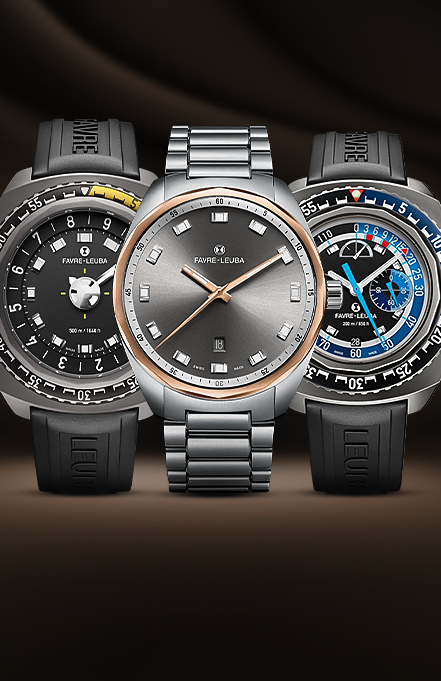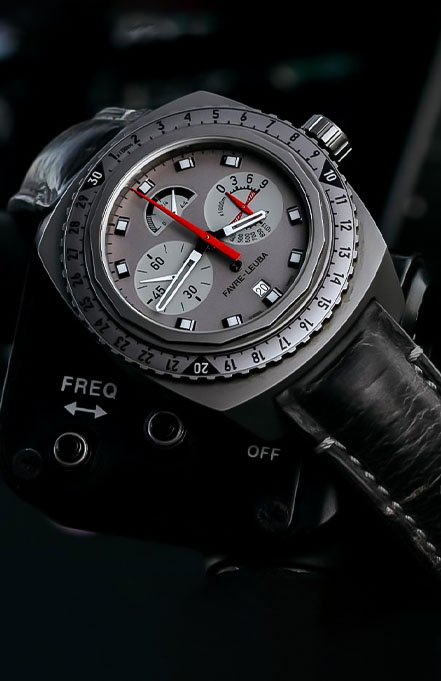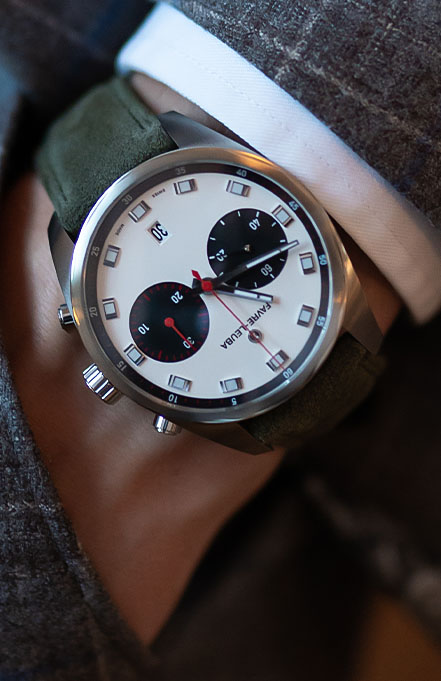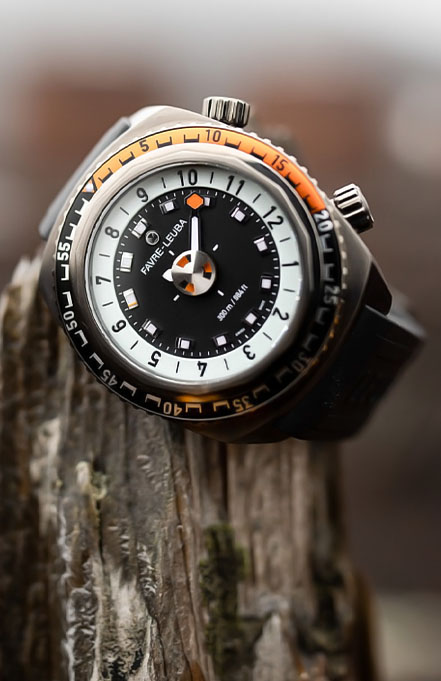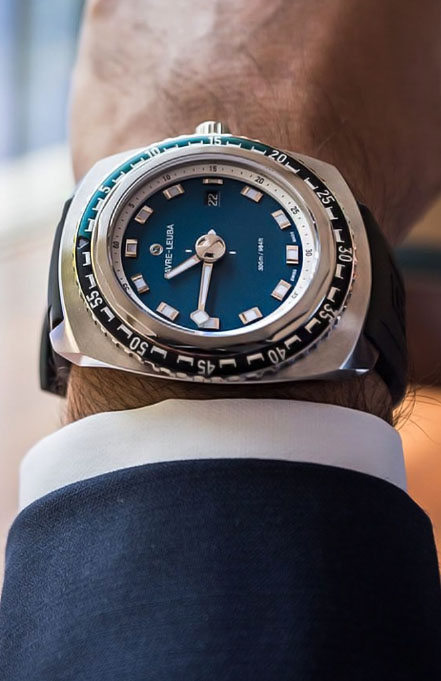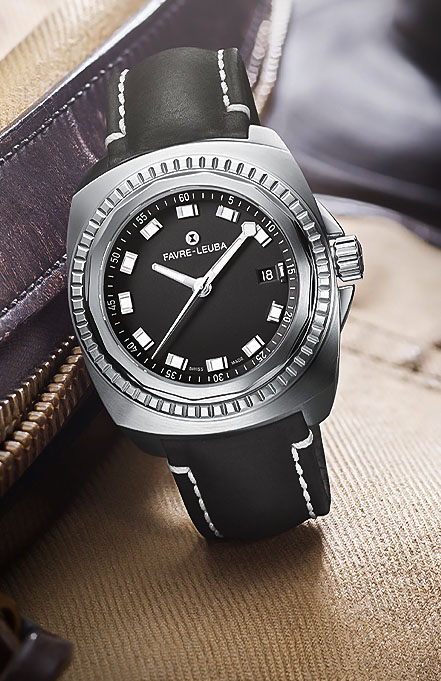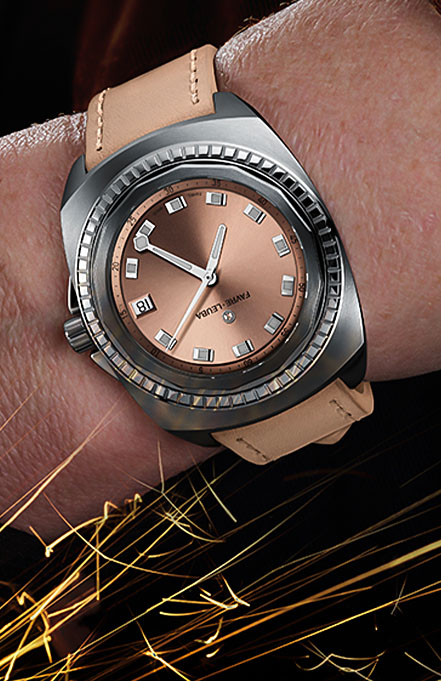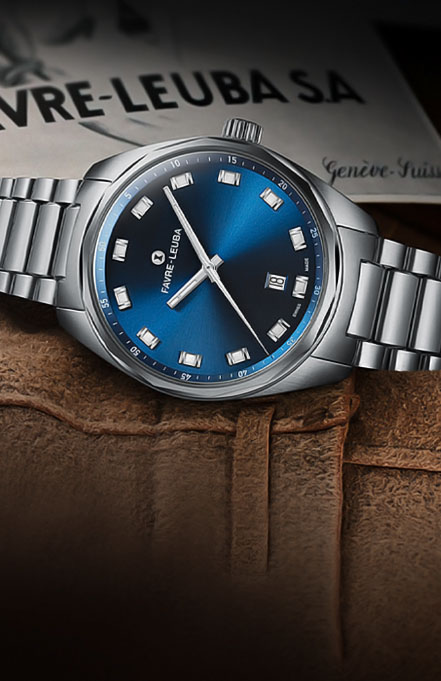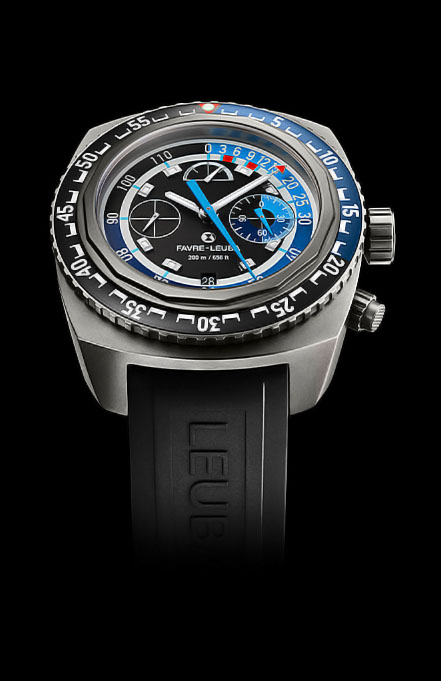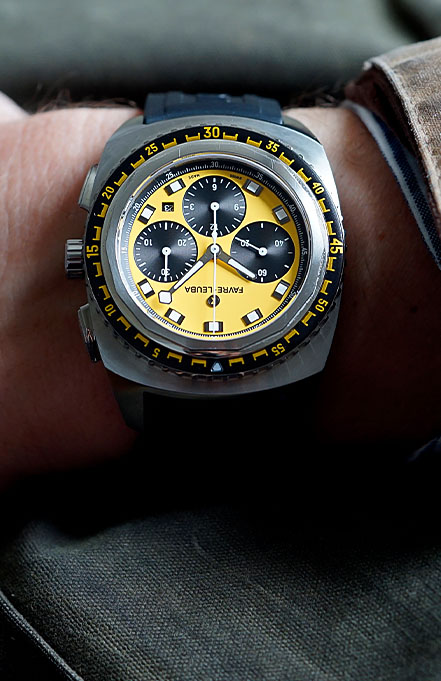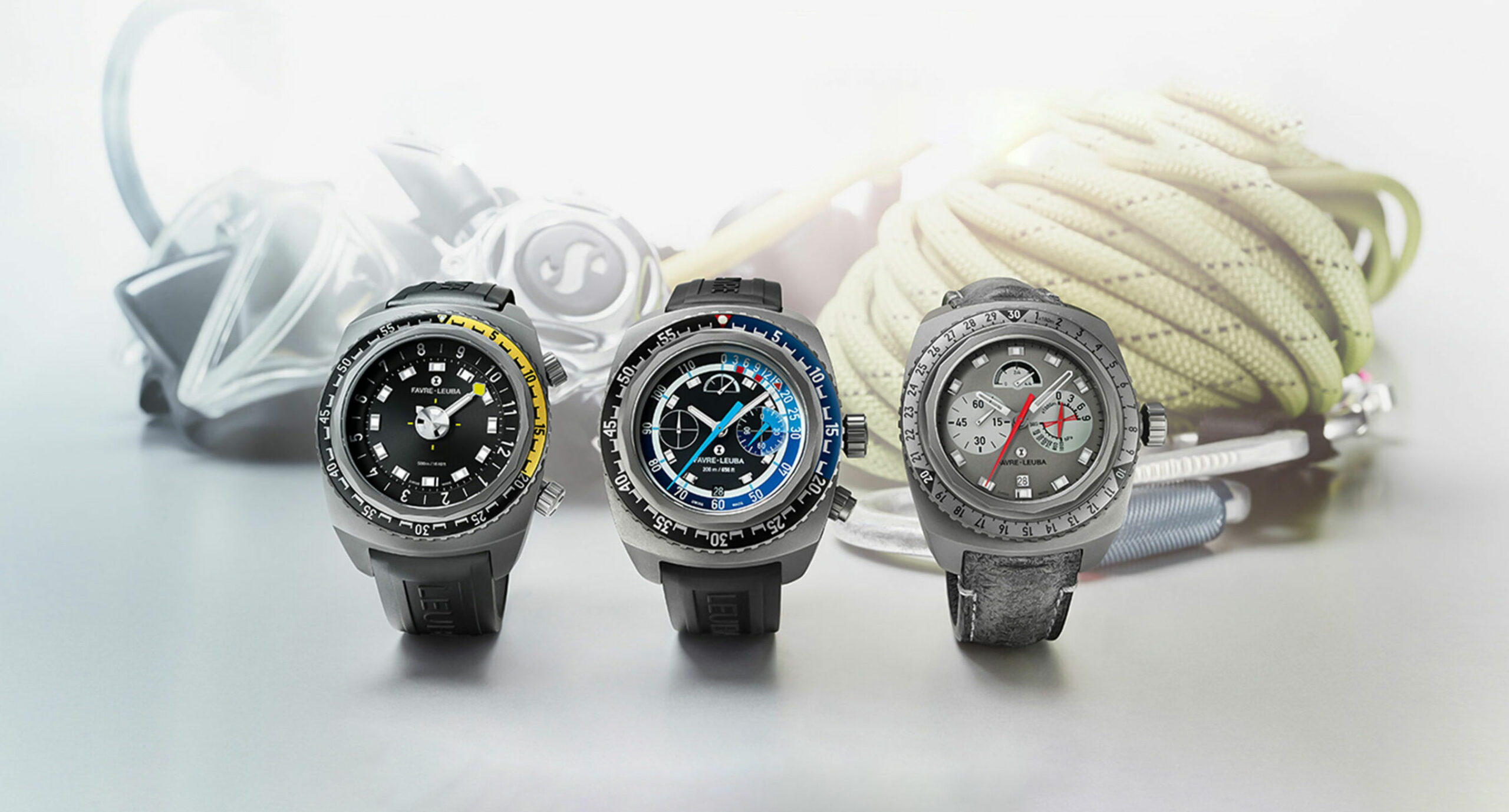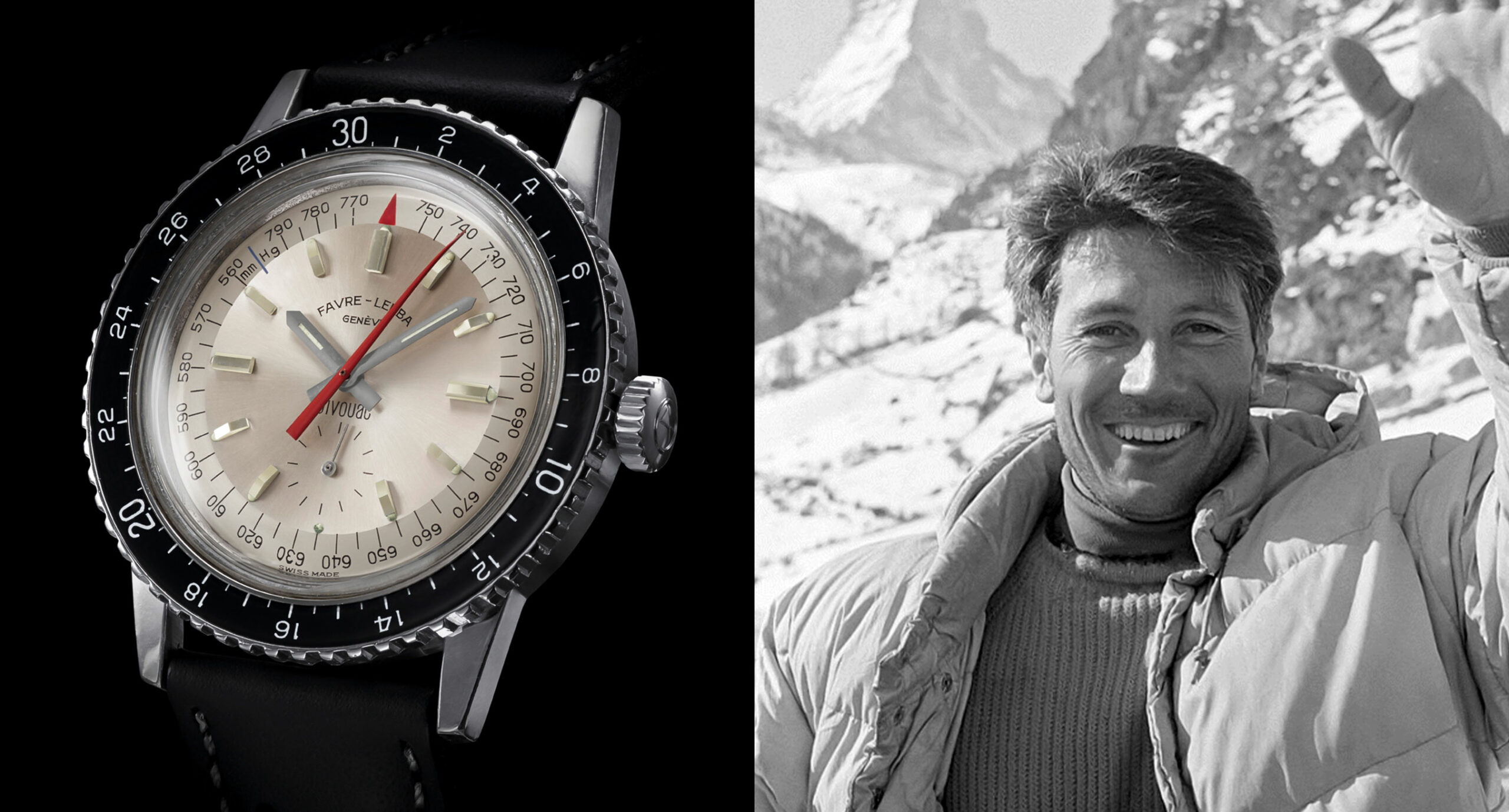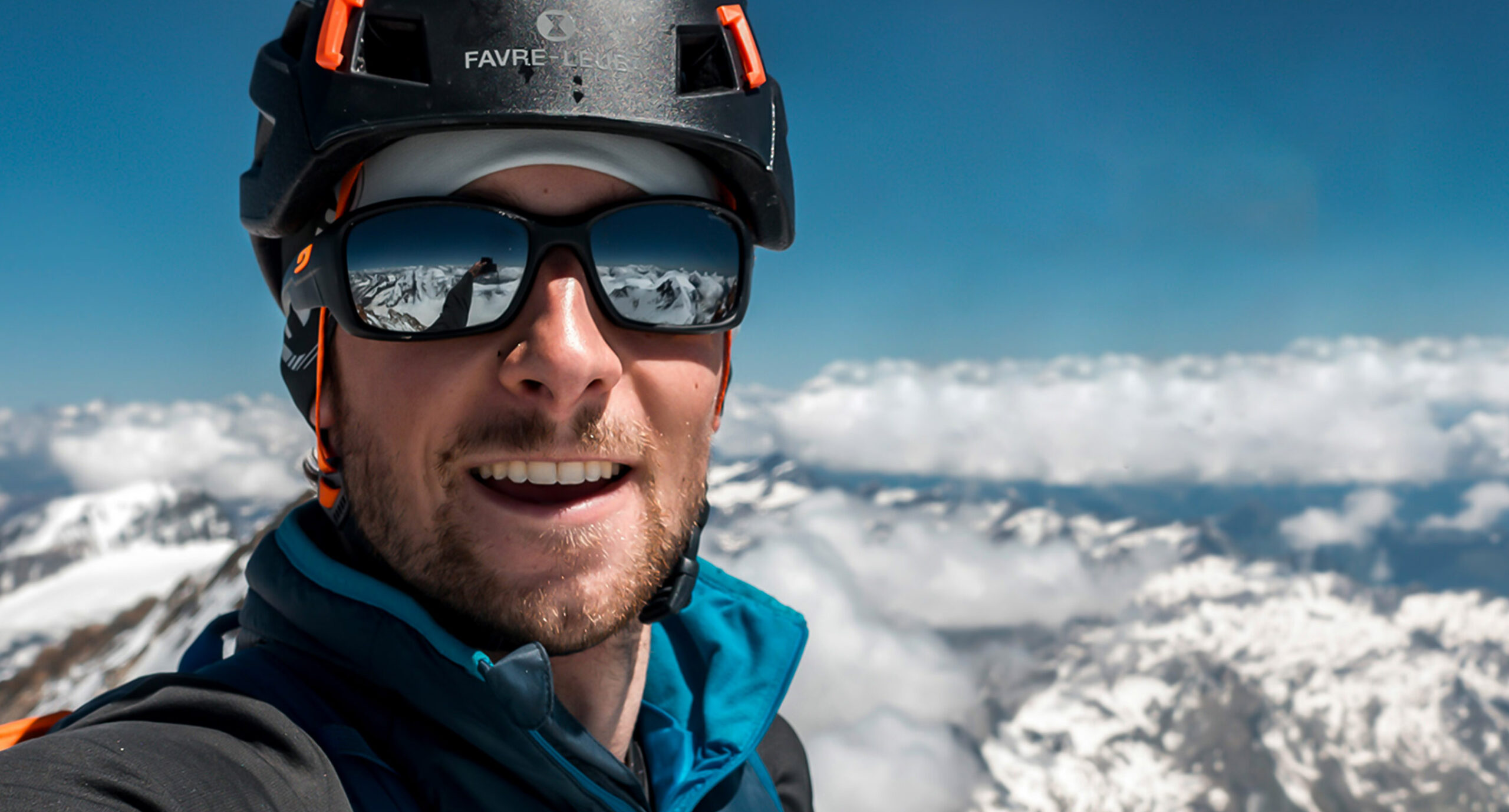Favre Leuba has a long-standing heritage dating back to 1737, a time when Abraham Favre was based in Le Locle, Switzerland. The brand vision was set in stone early. Creating masterful timepieces, with precise and pioneering technology. At the core of Favre Leuba was and still is today, a desire to build exploration instruments. Bold and enduring with character, to be companions to those who conquer frontiers.
The Icons
As with many visions, they evolve and gain momentum through the generations. Today we unveil our coming of time, with the latest collection of Favre Leuba Raider exploration wristwatches. These are the Bivouac 9000, Bathy 120 MemoDepth and the Harpoon. The Icons of sea-to-summit Voyages from Past and Present. Introducing the latest in mechanical technology, guiding mountaineers on altitude and similarly divers on depth readings. Whilst also releasing an innovative new approach to timekeeping displays, read on to discover the future of exploration instrument watches.

Bivouac 9000
1964, Walter Bonatti, one of the most successful mountaineers of all time is climbing in the Grand Jorasses. Faced with an impending storm, he turned to his Bivouac to gauge his distance from the summit. In a potentially life-saving decision, he sought out a safe area to create shelter from the storm. He knew from the altimeter reading on his Bivouac that it was too far to climb to reach the summit safely in such drastic weather conditions.
In 2018, the iconic watch was re-engineered with contemporary technology and introduced back into the alpine world. Galvanised out of durable, but lightweight material, the Bivouac is more robust than ever.
Furthermore, it is ready to read and display the altitude and air pressure conditions to 3 times higher than what its predecessor did The new Bivouac 9000 measures the altitude from below sea level to 9000m, which is beyond the roof of the world. The 48mm diameter barrel-shaped case is crafted to the highest level to protect the inner mechanism of the watch. Inside, you will find a manual-winding FL311 movement. The innovative capsule made of new materials is used to measure the air pressure, and the precise design allows it to measure minor changes in the surrounding atmospheric pressure. The capsule conveys the changing weather and the altitude thereof and is the heart of the Bivouac altimeter technology. As the mountaineer ascends, the surrounding air pressure decreases, so the aneroid capsule expands. This incredibly small linear movement is translated via a mechanism onto the face of the watch to indicate both air pressure and altitude readings.


Awarded the independently judged New Star Award 2018, the Bivouac 9000 is already achieving in its short history. Adrian Ballinger, a renowned mountaineer, summited Everest earlier in the same year wearing the Bivouac 9000. Securing the title as the first altimeter wristwatch to precisely convey a correct altitude reading all the way to the top of the world at 8,848m.
“At 8800m – my Raider Bivouac 9000 performed all the way flawlessly to the summit of Mt Everest” Adrian Ballinger, 20th May 2018.

Technical Specifications:
MOVEMENT: Hand-wound FL311 movement, based on the EMC 3903M calibre; specially designed mechanisms for altimeter and power-reserve indicator; power reserve of 65 hours
FUNCTIONS: Hours, minutes, small seconds, central hand to display altitudes of 3,000 m per full rotation, subdial for displaying altitudes of up to 9,000 m and air pressure in hPa, power-reserve indicator, date display
CASE: Bidirectional rotating bezel with anodized aluminium insert; screw-in crown; sapphire crystal with antireflection coating on both sides; screwed and aligned case back; diameter 48 mm, water-resistant up to 3 bar/30 m
DIAL: Applied indexes; luminous indexes and hour and minute hands, red hand for altimeter
STRAP: Gray antelope leather with pin buckle

Bathy 120 Memodepth
In 1968 came the release of the world’s first dive watch with a built-in depth gauge. The Favre Leuba Bathy had delivered truly pioneering technology, allowing divers to gauge their descent below the ocean. Also, this critical information was essential in assisting divers with their decompression zones before resurfacing.
In 2018 our objective was to not only re-introduce the Bathy but deliver a highly sophisticated dive watch that would indeed match the level of diving exploration we see in the ocean today. The Bathy 120 MemoDepth uses similar technology to that of the Bivouac 9000, however, with subtle yet crucial differences. The back of the case shows small, precisely crafted openings in the style of the Favre Leuba hallmark. These openings let in ocean water and thus allow the dive watch to measure water pressure but protect the movement of the watch with hydrophobic sealing. As the diver descends, water pressure increases and the specially engineered membrane alters shape. A mechanically calculated degree of change in the membrane translates onto the watch face.
As a result, the diver can quickly observe their depth down to 120m. The 200m water-resistant dive instrument hence not only displays dive time and depth but also records the maximum depth. On resurfacing, the diver can notice the lowest point of the dive. All done mechanically.

The watch’s face is highly legible with a range of indicators, such as the 20-minute scale on the unidirectional rotating bezel, dive depth quadrants on the dial, and red decompression stop indications. Furthermore, the light luminous hands and indices increase the ability to sight for readings in the dark depths whereas the intelligent use of colour shading on the face helps to signify greater depths. Similarly, the blue centre-mounted hand sharply draws the eye to the current depth reading. Above all, the wristwatch is once again robust and enduring. We are exemplified by our use of grade-5 titanium to craft a sturdy 48mm case designed to ensure it does not feel too big on the wrist. The fit on a thick wet suit and also on the bare wrist is excellent, and the size allows ease of reading dive information at great depths. As a result, the Bathy 120 MemoDepth is a dive watch built to conquer ocean frontiers.
Professional Dive explorer Florian Fischer from Behind The Mask team says – The Bathy 120 MemoDepth is an excellent, multifunctional diving watch. Ideal for adventurers and divers that have exceptional demands when it comes to design and functionality. Having used it in icy waters of Norway, and also in the warm waters of the Azores, the instrument’s ability is noteworthy. Regular divers find that the aperture in the case back also allows ease of cleaning of the membrane when exposed to the saline ocean water, a feature most dive watches lack thus making maintenance difficult in the long run.

Technical Data:
MOVEMENT: Hand-wound FL321 movement, based on the EMC 3903M calibre; specially designed mechanisms for depth gauge and power-reserve indicator, power reserve of 65 hours
FUNCTIONS: Hours, minutes, small seconds, central hand for displaying current dive depth up to 120 m, depth gauge subdial for displaying maximum depth recorded, power-reserve indicator, date display
CASE: Unidirectional rotating bezel with anodized aluminium insert, screw-in crown, sapphire crystal with antireflection coating on both sides, screwed and aligned case back, diameter 48 mm, water-resistant up to 20 bar/200 m
DIAL: Black dial with blue dive sector marking, red indication for decompression stops, applied indexes, luminous indexes and hour and minute hands, blue hand for displaying depth
STRAP: Rubber with pin buckle

Raider Harpoon
The Raider Harpoon was initially launched in 2016 and created much buzz with its unique method to display time. In 2019, it comes with a brand new look. The modified case and the original design of the lugs allow for a superior fit. Next, not only the central dial but also the hour display ring is now black. It is offering a more distinct and sharp style to the watch. Also, a matt finish of the PVD gunmetal has been added to deliver a robust feel.
The 1960s Deep Blue dive model inspired the creation of the Raider Harpoon. The timepiece stands out for its bold colours and heritage barrel-shaped case. With the single minute hand and the co-rotating hour ring, the innovative method for displaying time ensures ease of reading during a dive. Even on dry land, the watch with a single hand provides you only have to look at one point to read the precise time as this indicates both the minutes and hours. As the minutes tick away, the hours display on the co-rotating disc which is visible on the edge of the dial, which has a blue emission bright display, ensuring high visibility even in the dark. It means that with one swift glance, you can sight both the minutes and hours from one hand no matter the surrounding light conditions.
The reason for engineering this method of time display is that elapsed minutes is the most crucial information for a diver. Therefore the minute reading is front and centre on the face of the Harpoon. This also prevents the confusion caused by the overlap of the hour and minute hands, which can be fatal during diving. Furthermore, seconds are displayed using a function control central rotating disc.


Powering the Harpoon is the patent-pending, constant Automatic FL301 movement. Designed on the Sellita SW200 caliber. The 46mm case and screwed-in back protect the automatic action. The case also has a screwed-down crown, helium valve, and thick sapphire crystal. All of this enables a water resistance rating of 50 bar / 500m. Also, the watch features a stainless-steel, unidirectional bezel. It has a 20-minute marked dive scale on it, which is visible on the anodised aluminium insert — an essential tool for keeping track of dive times.
Furthermore, Super-LumiNova is not only applied to the hour ring but also to the minute hand and the central function control disc. As a consequence, you can view the functioning watch face clearly in the dark. The extreme lume used on the Harpoon assists deep ocean divers as the light begins to dim below 50m.
Pen Hadow used the Harpoon to great effect on his latest Arctic research mission. “Watch-making and exploration became closely entwined when accurate timepieces developed beyond timekeeping and became instruments to reckon with in the deep unknown” – Pen Hadow

Technical Data:
MOVEMENT: Automatic FL301 movement, based on the Sellita SW200 caliber; patented mechanism for hour display
FUNCTIONS: Time display by minute hand and hour indicator, running seconds disk at the centre for function control, helium valve
CASE: Unidirectional rotating bezel with anodized aluminium insert; screw-in crown; sapphire crystal with a barrel-shaped coating on both sides; screwed and aligned case back; diameter 46 mm, water-resistant up to 50 bar/500 m
DIAL: Applied index marks; luminous (blue emission) index marks and hour indicator, minute and second hands, markings under seconds disk
STRAP OPTIONS: Black rubber strap, Black calf leather strap or the new Gray antelope leather strap with pin buckle or folding clasp.
